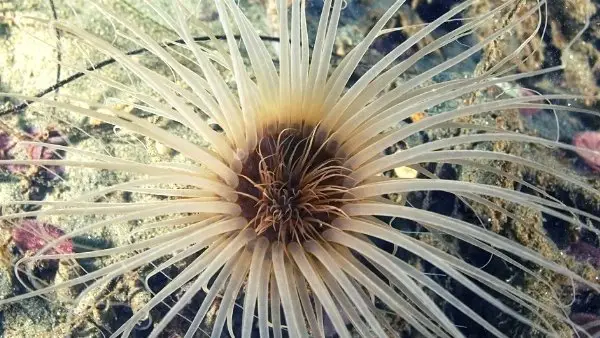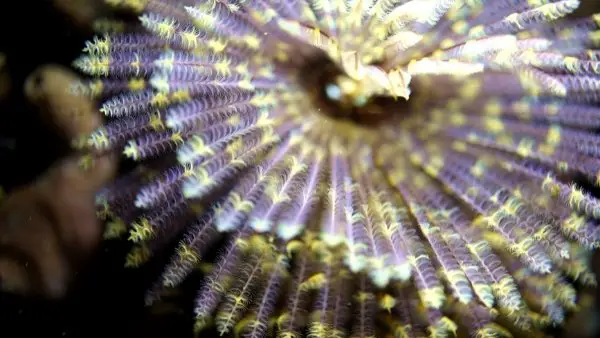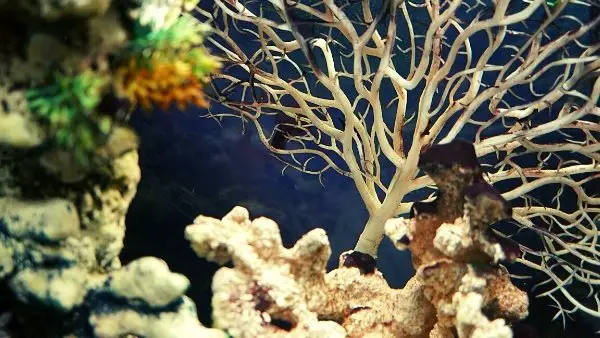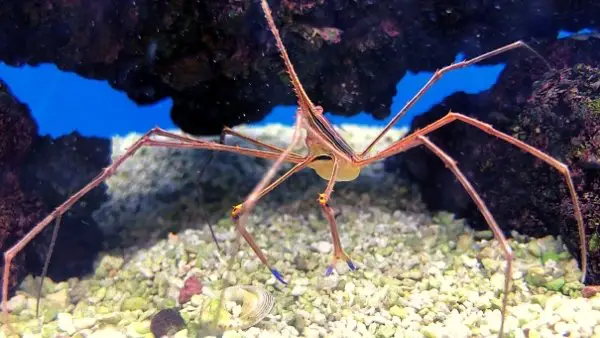It’s always a scary moment for a hobbyist when a random hitchhiker is discovered residing in your aquarium and within your community with no invitation.
Questions are constantly running through your mind, with perhaps the most common being “how did it get here?”.

Fortunately, hitchhikers are all too common in the aquarium game, and most of them do not pose any threat to your community, however, some certainly do.
Spaghetti Worm Overview and General Information
It certainly is a possibility that they will expand in numbers at a rapid rate, and the best advise we can give regarding population control would be simply reducing the amount of food your feed your tank.
Not only will it slow their numbers down but it will also keep your tank a lot more clean.
Much of the excess food left in your tank will either be eaten, turn into harmful bacteria, or just sludge that resides all around your tank and on the glass, which does not make for a particularly pretty picture. If you find a Spaghetti Worm - leave it be and let it work its magic!
Head further down the page for further information about how to prevent them and control the numbers.
Are Spaghetti Worms Good or Bad?
Fortunately, this guide is all about Spaghetti Worms, which are considered to be the good guys of the critter world! They are not only harmless, but they bring much benefit to your tank, so we recommend keeping them in your aquarium!
So, if you discover a worm living in your tank that possesses many thin tentacles that poke out of the sand bed or rock work, the likelihood is, you have yourself a Spaghetti Worm.
Behavior and Where to Find Them
All in all, these worms are totally harmless and eat harmful detritus in abundance, which is great. On the downside, they can annoy some corals as they are constantly operating near the base of them, which on occasion can cause the corals to close up.
They are definitely not attacking or causing harm to your corals when this happens, but it can be an annoyance to corals.

Most of the time you will not see the spaghetti worm's body, they tend to hide within the sand relatively deeply, with only their long tentacles poking out of the sand.
Their bodies are segmented, and they look similar in appearance to the Earth Worm. Their coloration is typically cream, white, pink, brown, or beige, with some of them occupying striped feeding tentacles.
Something to watch out for is that they will multiply in numbers at a fairly quick rate, especially if you are overfeeding your tank. They are, however, beneficial little critters so it is recommended to leave them be. They also can grow to 6 inches in length (15 cm).
Controlling The Population
If you do want to reduce the numbers as it is getting out of control, then following these procedures will be your best bet at not having an infestation on your hands.
Stop Overfeeding
Firstly, make sure you are not overfeeding your tank. These critters literally live off waste food and detritus, so, if you are feeding the rest of your tank too much food, there will be a lot of waste food, it is really that simple.
The best advice would be to reduce the amount you are feeding your tank and the numbers should go down since it will slow their reproduction.
If that doesn't work try more frequently cleaning the sand in the bottom of your aquarium by manually vacuuming it, or introduce other detritus feeders to your tank to compete with the spaghetti worms.

Manual Removal
Another method would be to simply take them out of your tank manually. Killing them would not only be inhumane, but a waste of valuable and helpful worms.
We would advise passing them on to another aquarist that you may know, they are an incredibly helpful addition to any tank.
Setting Up A Trap
There are several worm removal traps that are out there, they are mostly for removing fireworms and bristle worms and can be found online but you can find some in local pet and fishkeeping stores.
Most of the time you don't need to set up a trap since spaghetti worms are not that elusive. Just manually grab them and take them of your tank or use a pair of tweezers to do so.
Introducing Predator Fish
One more thing you could do is introduce a predatory fish to dispose of them, which is OK on one hand as you are providing food for a fish, but it is certainly not a recommended option.
Your best bet is to introduce a Wrasse species, with the more notable being the Six Line Wrasse, these fish will make light work of the Spaghetti Worms but killing them will lose any benefit they bring to your tank.
Do Spaghetti Worms Have Predators?
Yes, absolutely. Unfortunately for these awesome hitchhikers they are at the bottom of the food chain with regards to pretty much any aquarium they find themselves in.
Literally any predatory fish or crab will turn them into a light snack, especially aggressive Wrasses and Arrow Crabs.
So, if you do have a reef tank containing predatory fish, you should perhaps expect not to run across one of these critters as they will probably already have been taken care of.

Conclusion
In conclusion, these critters will likely make an appearance in your tank at some point during your aquarist journey, especially if you have a well-established tank. Deciding what you do with them is entirely up to you. We would advise keeping them due to their harmless nature and beneficial usage, bringing much needed help to your tank when it comes to harmful bacteria and detritus. Another popular aquarium hitchhiker worm is the spirorbid worm - learn more about it with our spirorbid hitchhiker worm guide.
